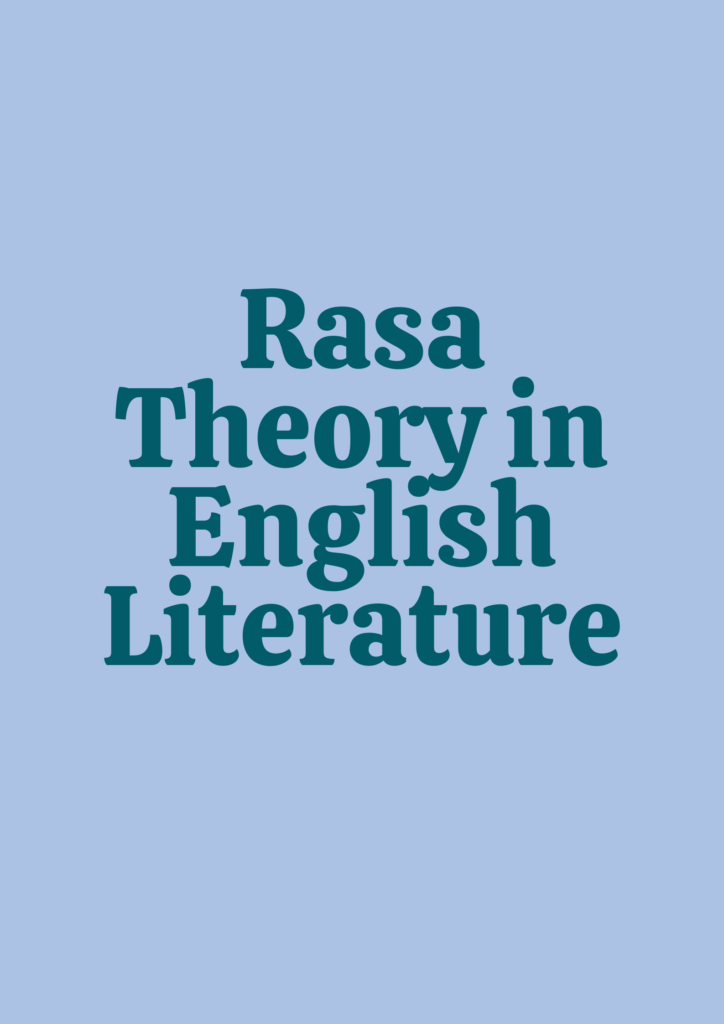Rasa Theory in an extract from book, Natyashastra by Bharata Muni. Natyashastra is a book which has 36 chapters and Rasa theory is a 6th chapter from it.
Theory of Rasa By Bharata Muni

Rasa Theory in English Literature By Bharata Muni
Natyashastra’s theory talks about how Drama should be written, how to perform Drama and how should be the theatre, how to do makeup and how to dress characters.
Let’s first learn what is Rasa ?
In simple words, Rasa is an entertainment. If your fruits doesn’t have a juice in it, would you enjoy it ? So just like fruit, if Drama or poetry doesn’t have any emotions and entertainment, would you enjoy it ?
We enjoy Drama and poetry with full of emotions and entertainment. So Drama and Poetry should be full of emotions and entertainment otherwise people don’t love it or enjoy it. If your Drama and Poetry doesn’t have Rasa then people would not love it.
There are eight types of Rasa. First is Sringara ( Eroctic ), Second is Vira ( Heroic), third is Karuna ( Pathetic ), fourth is Hasya ( Comic ), fifth is Raudra ( Ferocious ), sixth is Bhayanak ( Fearful ), Seventh is Bibhatsa ( Loathsome ) and eighth is Adhbuta ( Wonderful ).
If your poetry or Drama has love in it then it is Sringara Rasa. Rati is an emotion of love. If you want to develop an emotion of love then you have to use Sringara Rasa.
Vira Rasa is an enthusiasm and energy. The Sanskrit word for Enthusiasm and energy is Utsaha.
If you want to develop an emotion of pain and grief in your poetry then you have to use Karuna Rasa. The Sanskrit word of Grief is Soka.
If you want to do comedy then you have to use Hasya Rasa. The Sanskrit word for Laughter is Hasa.
Raudra Rasa means Anger. The Sanskrit word for Raudra is Krodha.
Bhayanaka Rasa means fear or fearful. The Sanskrit word for Bhaya is Fear.
Bibhatsa means Disgust, a feeling of hate. The Sanskrit word for Disgust is Jugupsa.
Adbhuta Rasa means Wonder. The Sanskrit word for Wonder is Vismaya.
These are the eight types of Rasas which we can used to make our Drama, Poetry and Dance better and entertaining. The Eight Rasa are given by Bharata Muni.
Later on, Udhabata, a Kashmiri poet added one more Rasa which is Shanta Rasa. Shanta Rasa means tranquility. Shanta shows an emotion of tranquility, a emotion which is emotionless.
We have 9 Rasa, 8 is given by Bharata and 1 is given by Udhbata.
We knows 9 Rasa now but we should also know about their God and Color as it is very important.
Sringara ( Erotic )’s god is Vishnu and colour is Light Green. Hasya ( Comic)’s god is Shiva and colour is white. Karuna ( Pathetic ) god is Shiva and colour is Red. Raudra ( Ferocious ) god is Yama and colour is Grey. Vira ( Heroic ) god is Shiva and colour is Blue. Bhayanaka ( Fearful ) god is Yama and colour is Black. Bibhatsa ( Loathsome ) god is Indra and colour is Saffron. Adbhuta ( Wonderful ) god is Brahma and colour is Yellow.
Rasa is divided into two parts, first is Angi Rasa and second is Anga Rasas. Angi Rasa is a Principal Sentiment. While Anga Rasas is Subsidiary sentiments. For example, If you are watching a Romantic movie and it also has little bit of action, comedy and sadness. Then Romance is a principal sentiment of movie and other sentiments are Subsidiary Sentiments which is Anga Rasas.
YOU MAY ALSO LIKE